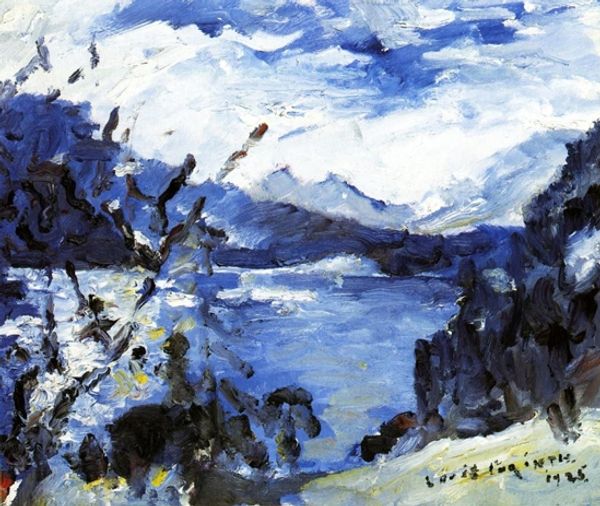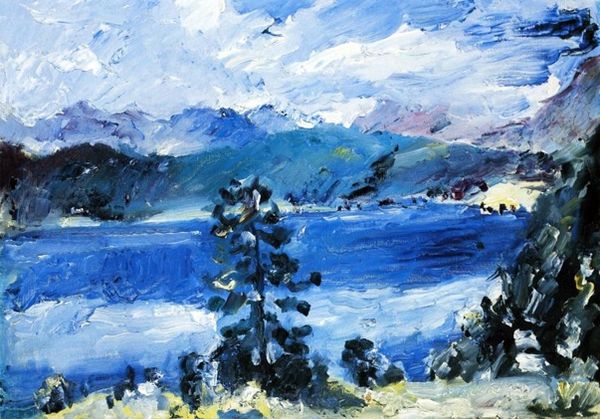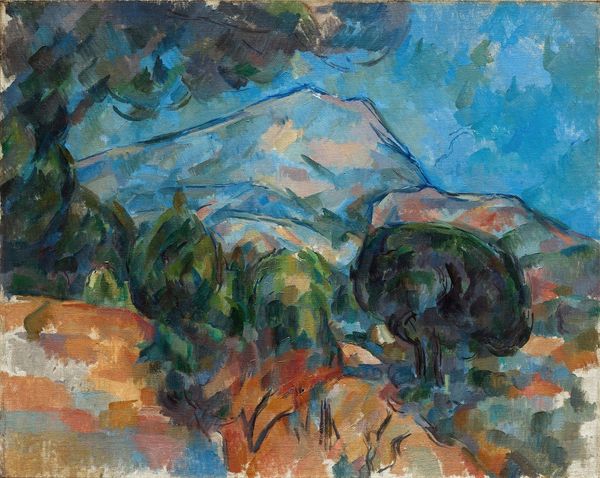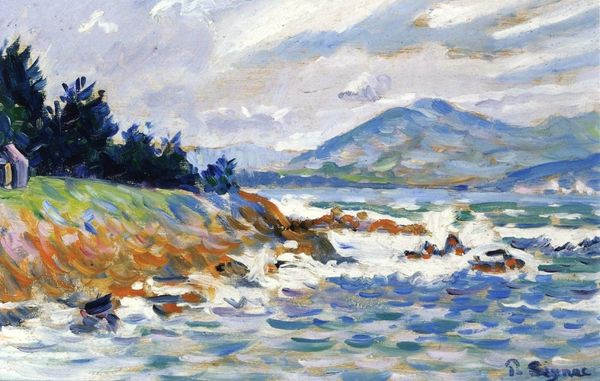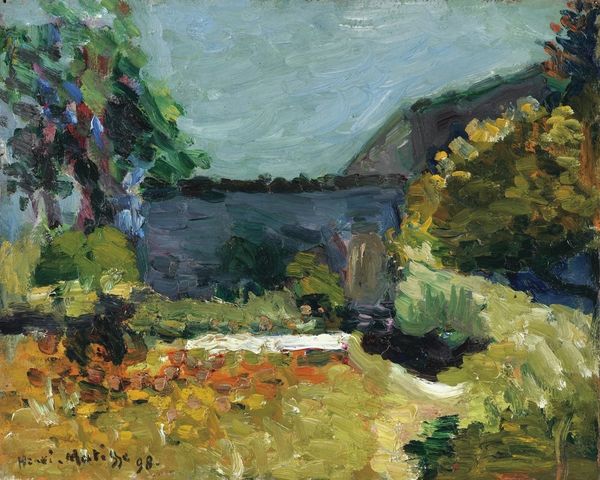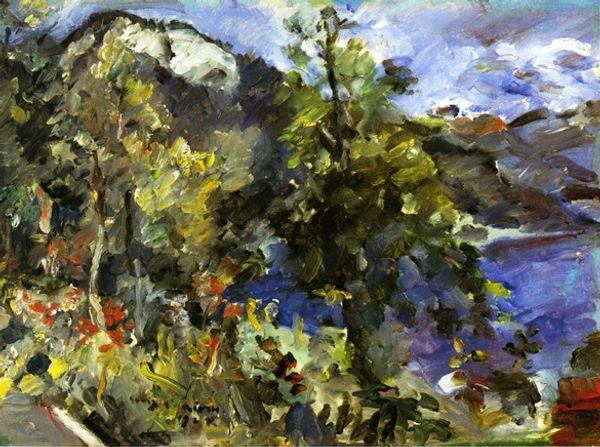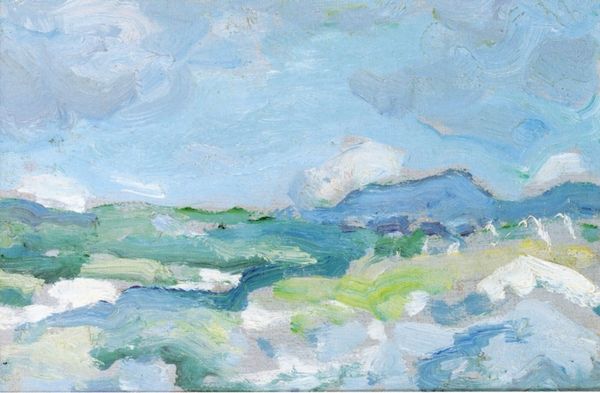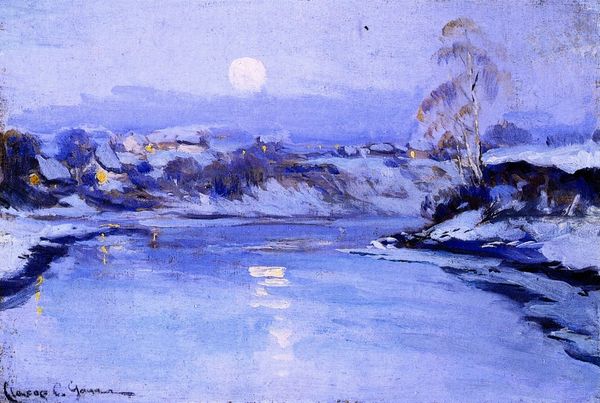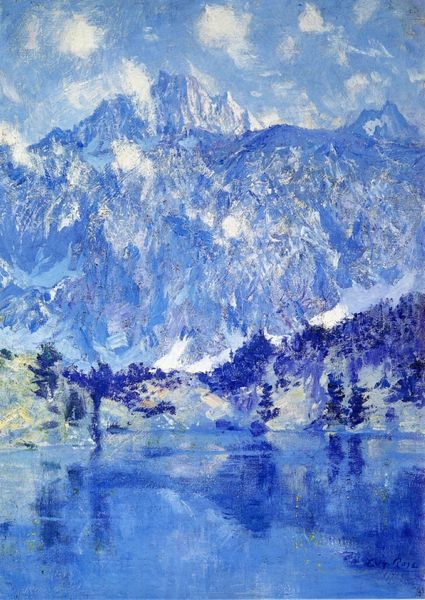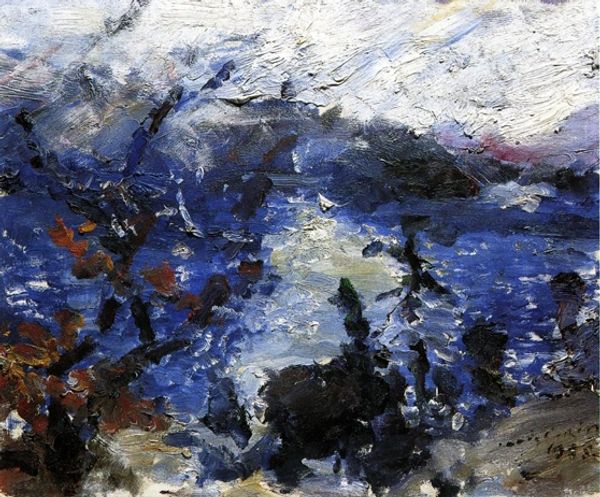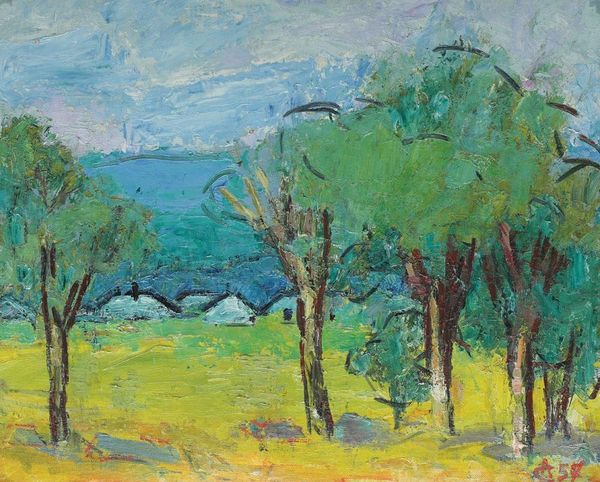
painting, oil-paint
#
impressionist
#
sky
#
painting
#
oil-paint
#
landscape
#
impressionist landscape
#
neo expressionist
#
neo-expressionism
#
expressionism
#
natural-landscape
#
water
#
expressionist
Copyright: Public domain
Curator: Here we have Lovis Corinth’s "Lake Lucerne-Afternoon," created in 1924. Corinth was a German artist who navigated the shifting landscapes of Impressionism and Expressionism, and this painting showcases his evolving style towards the later years of his career. Editor: It’s almost monochromatic, an overwhelming wave of blues, yet not at all calm. I see a roiling energy in those brushstrokes. There's an anxious quality about the way he's rendered the mountains, the water, even the sky. It gives the impression of something turbulent and restless below the surface. Curator: Corinth's intense brushwork and bold color choices are hallmarks of German Expressionism, where emotional impact is often prioritized over accurate representation. Post-World War I Germany experienced intense social and political upheaval. Artists used Expressionism to reflect those raw and uncertain emotions. Editor: Absolutely. I wonder how the socio-political trauma of the time affected not only Corinth but the reception of his art. His perspective of landscape certainly echoes societal anxieties, portraying nature not as serene escape, but as mirror to human disquiet. Curator: It is fascinating to observe how Corinth infuses the traditionally calming genre of landscape painting with a certain unease. The art market in post-war Germany valued emotionally charged works, finding a reflection of their society’s sentiment. This emotional resonance drove not only what was made, but what was successful. Editor: And, thinking about art's purpose and power at the time: How was the artistic freedom of expression used or abused in shaping political discourse? This piece feels like a prelude to discussions about the responsibilities of the artist in times of intense political polarization. Curator: Exactly, we see art become deeply entwined with social movements, challenging norms, and acting as both mirror and a catalyst for societal change. Corinth reflects those tensions masterfully in what might, at first glance, seem like a simple landscape painting. Editor: It truly does. Even in its apparent simplicity, this artwork sparks critical discussion, reminding us of the potency of art to ignite social dialogues and personal reflection. It definitely made me rethink the connection between internal unrest and outward expression.
Comments
No comments
Be the first to comment and join the conversation on the ultimate creative platform.
